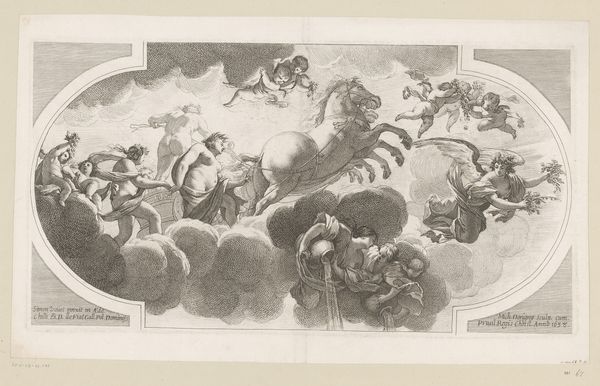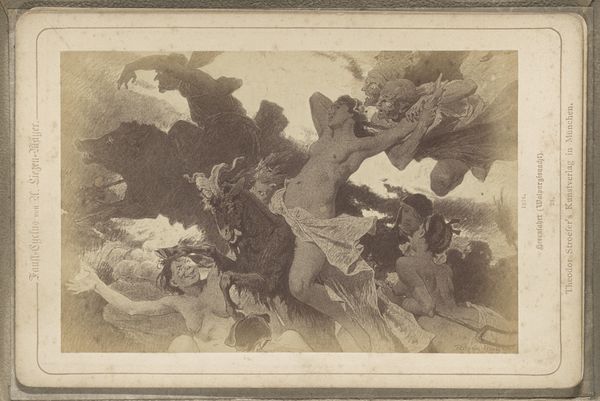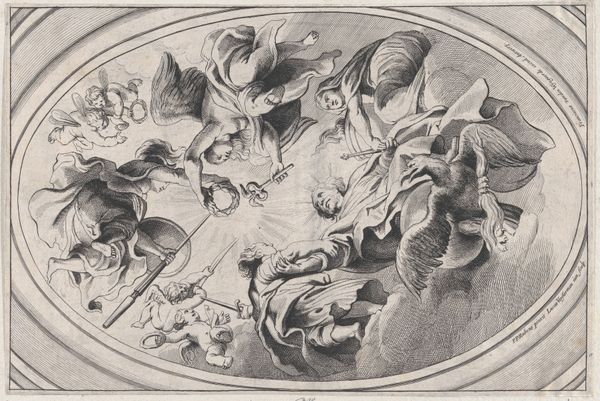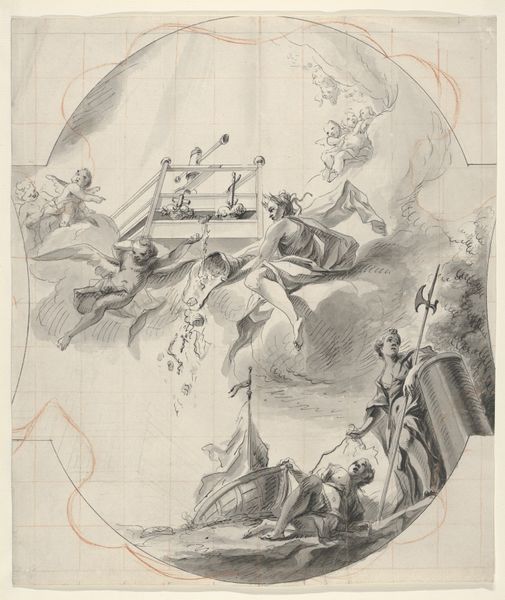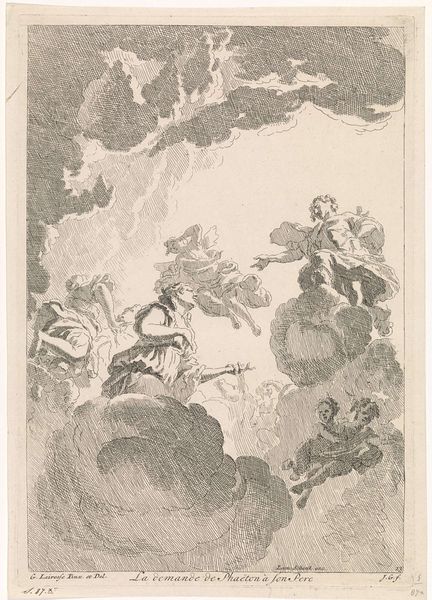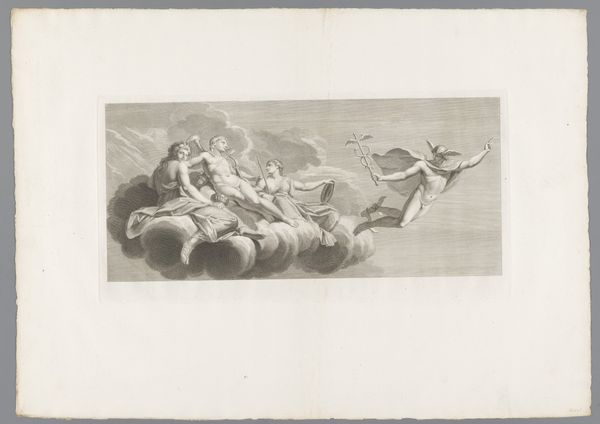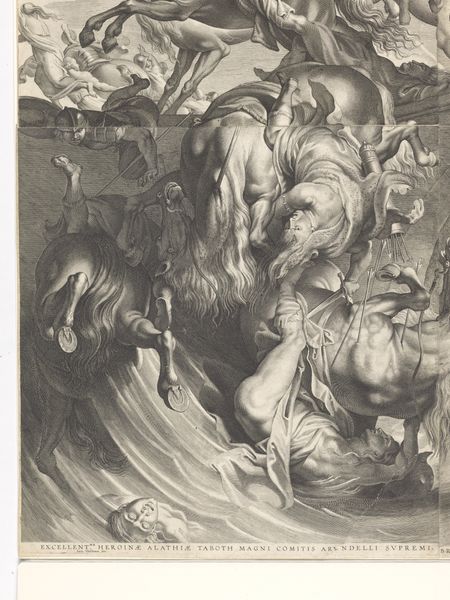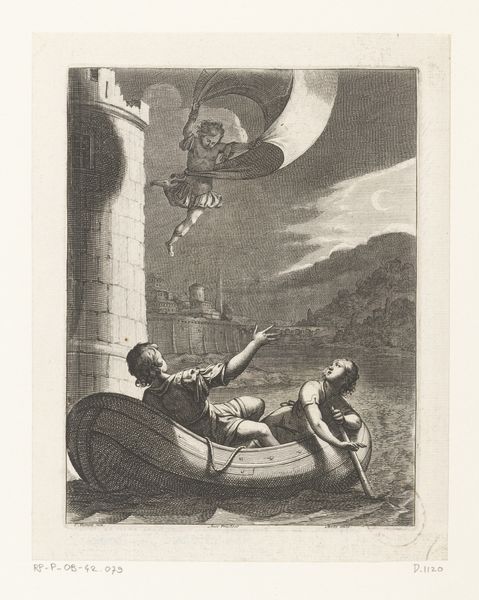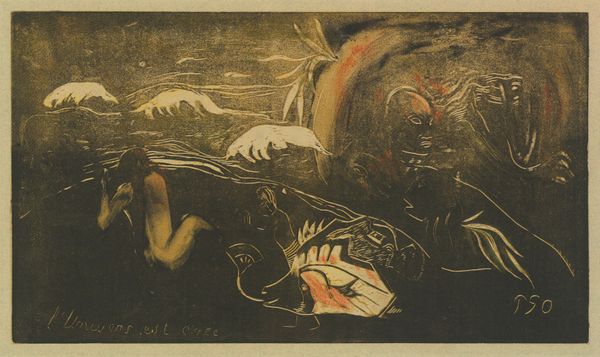
print, etching
#
aged paper
#
allegory
#
baroque
# print
#
etching
#
light coloured
#
old engraving style
#
landscape
#
figuration
#
old-timey
#
line
#
history-painting
Dimensions: height 267 mm, width 502 mm
Copyright: Rijks Museum: Open Domain
Editor: Here we have Michel Dorigny’s "Chariot of Diana," an etching from 1638. It strikes me as quite theatrical; all the figures seem to be dramatically posed amidst swirling clouds. What’s your take on this piece? Curator: This print offers a powerful glimpse into the Baroque era's fascination with allegories and its complicated relationship with female power. Considering the historical context, what do you observe in Dorigny’s representation of Diana, the Roman goddess of the hunt and moon, here? Editor: I see her riding her chariot, which is pretty classic for depictions of Diana. But also, she seems somewhat passive. There's an almost voyeuristic gaze implied in the lower part of the composition...Is she meant to embody a kind of regal femininity, or something else entirely? Curator: Precisely! Let's unpack that perceived passivity. Think about the socio-political landscape of 17th-century Europe. Representations of powerful women, even mythological ones, were carefully crafted. Is Dorigny celebrating female agency, or is he subtly reinforcing patriarchal norms by framing Diana within a male-dominated perspective? Editor: That's a good point. It's like she's framed and contained, even while ostensibly in control of her chariot. Almost like the goddess herself is made an object to be possessed. Curator: Indeed. And what about the male figures surrounding her? Note their dynamic poses. This could be indicative of the complex dance between masculine authority and representations of female power during this period. These themes have obvious intersections with ongoing dialogues around women today. How much has changed in how images of women continue to perpetuate cultural biases? Editor: That gives me a lot to consider. The image is far from being just a scene of mythology; it encapsulates an entire power dynamic. I thought it looked busy at first glance, but it feels almost deceptively complicated now. Curator: It shows the vital connections between visual representation, historical power dynamics and our lived experiences of art in our modern lives. Always situate art in the contexts that helped make it, and use this understanding to see the biases and beauty that the piece encapsulates.
Comments
No comments
Be the first to comment and join the conversation on the ultimate creative platform.
